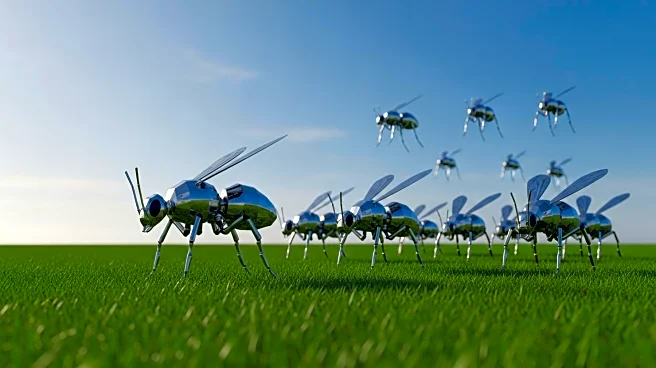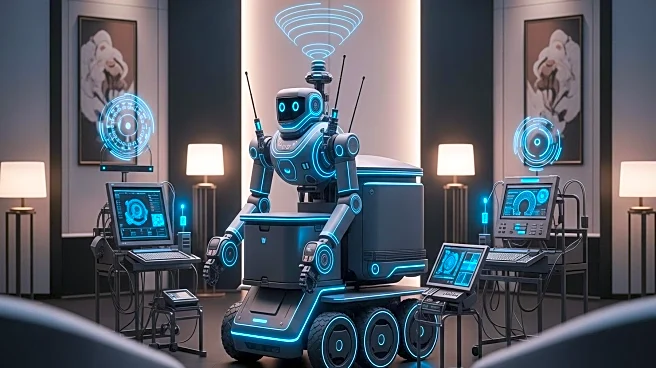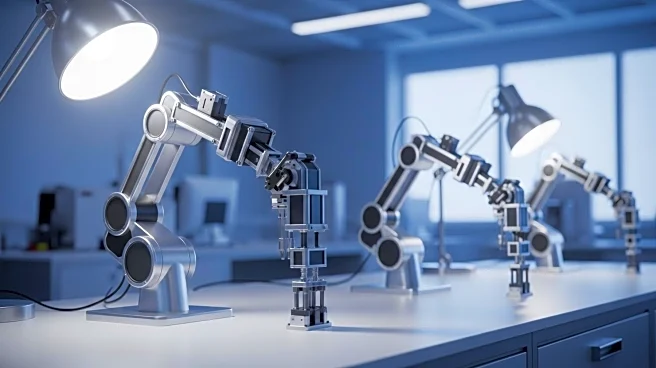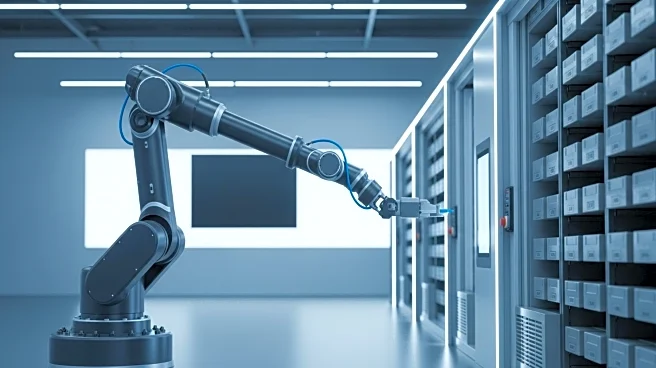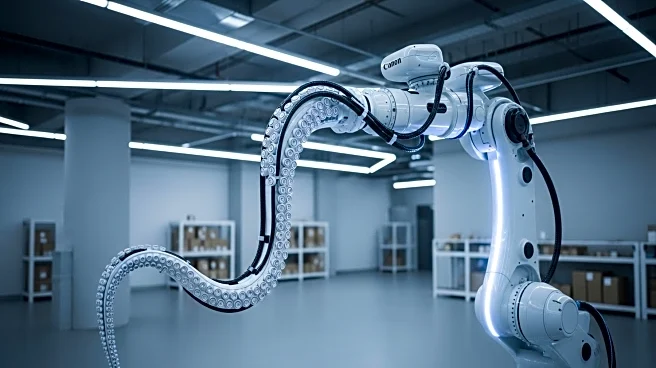What is the story about?
What's Happening?
Researchers have developed a new framework for robotic swarms that mimics the decentralized control found in groups of birds, fish, and bees. This study introduces 'curvity,' an intrinsic quality that allows robots to curve in response to external forces, enhancing swarm intelligence. The framework aims to replicate the efficiency of natural swarms, characterized by decentralized control and self-organization. Applications of this framework include improved search-and-rescue operations, wildfire detection, and precision drug delivery systems. The research offers promising advancements in swarm robotics, potentially revolutionizing industries such as aerospace manufacturing and medical treatments.
Why It's Important?
The development of this framework is significant as it addresses the challenge of creating decentralized control mechanisms in robotic swarms, which has been a daunting task for researchers. By mimicking natural swarms, the framework could lead to more efficient and agile robotic systems. This innovation has the potential to transform various industries, including aerospace and medicine, by embedding new control principles directly into robot designs. The ability to control robot interactions through geometric design rules could lead to advancements in large-scale industrial robots and microscopic robots for medical applications, improving efficiency and outcomes.
What's Next?
The study's findings, published in the Proceedings of the National Academy of Sciences, highlight the potential for swarm intelligence to revolutionize various industries. As researchers continue to refine these systems, the potential for innovation grows. The simplicity of the geometric rules and the introduction of curvity offer a promising roadmap for future developments. This progress paves the way for more agile and efficient robotic systems, capable of overcoming limitations that have hindered previous efforts. The future of swarm robotics holds vast possibilities, and the journey is only beginning.
AI Generated Content
Do you find this article useful?
